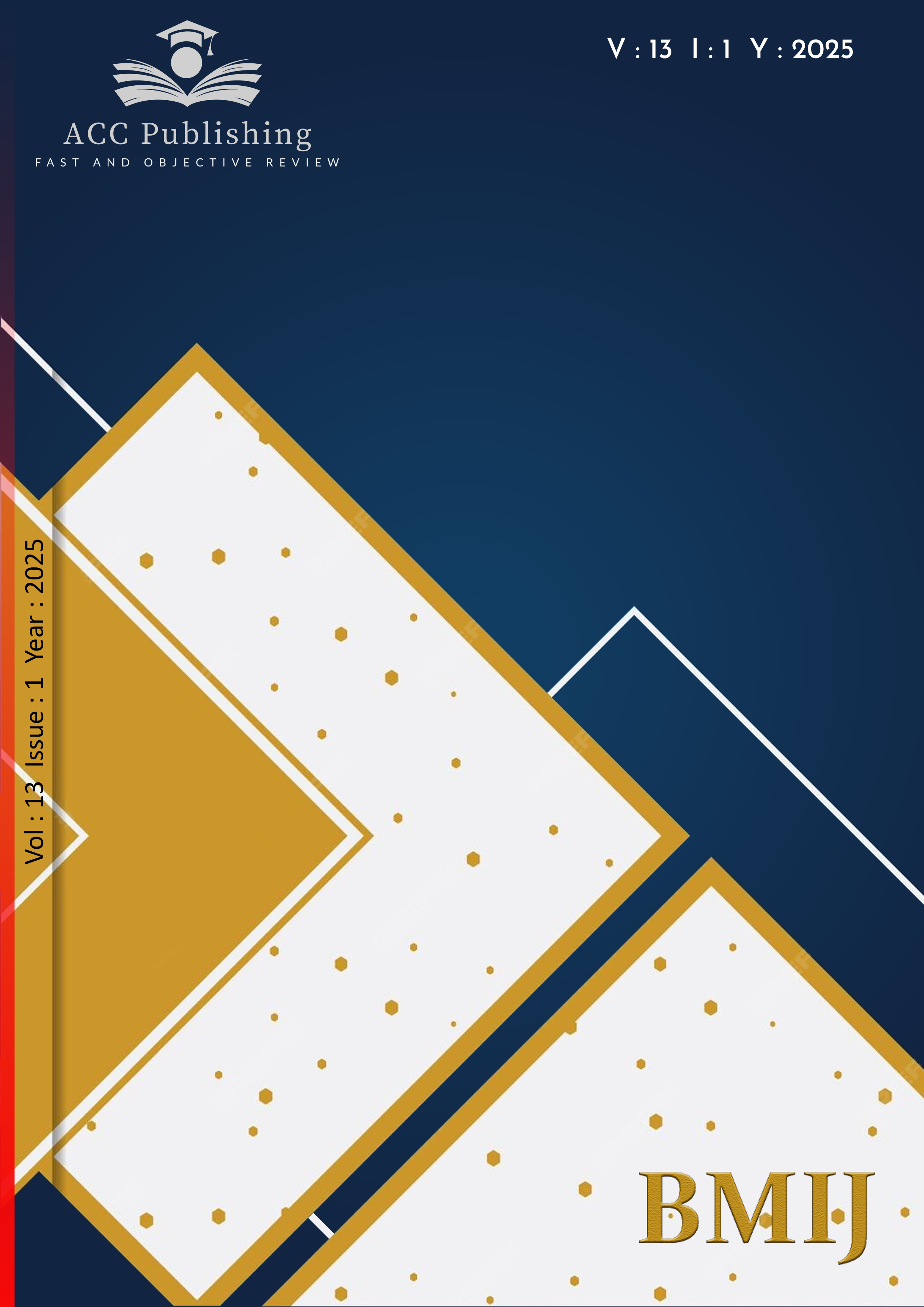Kenya'da çiçek soğuk zincir lojistiğinin performansını etkileyen faktörlerin değerlendirilmesi: geliştirilmiş bulanık SWARA yönteminin uygulanması

Yayınlanmış 25.03.2025
Anahtar Kelimeler
- IMF SWARA Method, Flower Cold Chain Performance, Floriculture Industry
- IMF SWARA Yöntemi, Çiçek Soğuk Zincir Performansı, Çiçekçilik Endüstrisi
Nasıl Atıf Yapılır
Telif Hakkı (c) 2025 Abdulrazak Yasin Mohamed- Gül Emel

Bu çalışma Creative Commons Attribution-NonCommercial-NoDerivatives 4.0 International License ile lisanslanmıştır.
Nasıl Atıf Yapılır
Öz
Kenya'daki çiçekçilik endüstrisi, özellikle kesme çiçek sektöründe hızlı bir büyüme yaşamaktadır. Çiçekler için soğuk zincir lojistiğinin verimliliği, hasattan son tüketiciye kadar tazeliğini, kalitesini ve raf ömrünü korumak için kritik öneme sahiptir. Çalışmanın amacı, Kenya kesme çiçekleri için soğuk zincir lojistiğinin performansını etkileyen çeşitli faktörleri belirlemek ve değerlendirmektir. Çalışmada, kapsamlı literatür incelemesi ve uzman görüşmesi yolu ile belirlenen toplam on dört faktör incelenmiştir. Karar toplantısına beş çiçek lojistiği uzmanı katılmıştır. Bu amaçla, kesme çiçek lojistiğinin performansını etkileyen faktörleri değerlendirmek için geliştirilmiş Bulanık Adım Adım Ağırlık Değerlendirme Oranı Analizi ‘ne (IMF-SWARA) dayalı çok kriterli bir karar verme yöntemi uygulanmıştır. Sonuçlar, Kenya kesme çiçek soğuk zincir lojistiğinin performansını etkileyen en kritik faktörün nitelikli işgücü eksikliği olduğunu, en az önemli faktörün ise talep duyarlılığı olduğunu göstermektedir.
Referanslar
- Adeola, O., Meru, A. K., & Kinoti, M. W. (2018). Kenya's blooming flower industry: enhancing global competitiveness. Africa's Competitiveness in the Global Economy. Adeleye, M. Esposito (Eds.), AIB Sub-Saharan Africa (SSA) Series (pp. 331-349). Springer.
- Agarwal, S., Kant, R., & Shankar, R. (2020). Evaluating solutions to overcome humanitarian supply chain management barriers: A hybrid fuzzy SWARA–Fuzzy WASPAS approach. International Journal of Disaster Risk Reduction, 51, 101838.
- Aleksis, K. S. B. (2024). The global floriculture industry: logistics and transport aspects a case study of the cut flower segment. (Master thesis, Saint-Petersburg State University). Saint-Petersburg. https://dspace.spbu.ru/bitstream/11701/46851/2/Condor_Alexis_Thesis.pdf
- Anumala, N. V., & Kumar, R. (2021). Floriculture sector in India: current status and export potential. The Journal of Horticultural Science and Biotechnology, 96(5), 673-680.
- Atlı, H. F., & Senir, G. (2024). Green supplier selection using IMF SWARA and Fuzzy WASPAS techniques for the supply of agricultural pesticides. Black Sea Journal of Agriculture, 7(4), 377-390.
- Awuor, E. (2012). A conceptual model for managing supply networks for simultaneous optimisation in a complex adaptive environment: A case study of the floriculture industry in Kenya. (Doctoral thesis, University Of South Africa). https://core.ac.uk/download/pdf/43169863.pdf
- Babalola, A. O., Sundarakani, B., & Ganesh, K. (2011). Cold chain logistics in the floral industry. International Journal of Enterprise Network Management, 4(4), 400-413.
- Balaji, M., & Arshinder, K. (2016). Modeling the causes of food wastage in Indian perishable food supply chain. Resources, Conservation and Recycling, 114, 153-167.
- Bogataj, M., Bogataj, L., & Vodopivec, R. (2005). Stability of perishable goods in cold logistic chains. International Journal of Production Economics, 93, 345-356.
- Brosnan, T., & Sun, D. W. (2001). Pre-cooling techniques and applications for horticultural products review. International Journal of Refrigeration, 24(2), 154-170.
- Button, K. (2020). The economics of Africa's floriculture air-cargo supply chain. Journal of Transport Geography, 86, 102789.
- Cai, X., Chen, J., Xiao, Y., Xu, X., & Yu, G. (2013). Fresh-product supply chain management with logistics outsourcing. Omega, 41(4), 752-765.
- Capitalfm (2024), Kenya records new high in horticultural exports. Retrieved from: https://www.capitalfm.co.ke/business/2024/01/kenya-records-new-high-in-horticultural-exports/
- Cassey, A. J., Lee, K., Sage, J., & Tozer, P. R. (2018). Assessing post-harvest labor shortages, wages, and welfare. Agricultural and Food Economics, 6, 1-24.
- Christiaensen, L., Rutledge, Z., & Taylor, J. E. (2020). The future of work in agriculture: Some reflections. World Bank Policy Research Working Paper, (9193).
- Coulibaly, T., Islam, M., & Managi, S. (2020). The impacts of climate change and natural disasters on agriculture in African countries. Economics of Disasters and Climate Change, 4, 347-364.
- D’Alessandro, S., Caballero, J., Simpkin, S., & Lichte, J. (2015). Kenya agricultural risk assessment. World Bank Group. https://bit. ly/2RnCyhP.
- Dai, J., Che, W., Lim, J. J., & Shou, Y. (2020). Service innovation of cold chain logistics service providers: A multiple-case study in China. Industrial Marketing Management, 89, 143-156.
- De Carvalho, P. R., Naoum-Sawaya, J., & Elhedhli, S. (2022). Blockchain-enabled supply chains: An application in fresh-cut flowers. Applied Mathematical Modelling, 110, 841-858.
- de Keizer, M., Van Der Vorst, J. G. A. J., Bloemhof, J. M., & Haijema, R. (2015). Floricultural supply chain network design and control: industry needs and modelling challenges. Journal on Chain and Network Science, 15(1), 61-81.
- Dolan, C., Opondo, M., & Sally Smith, S. (2012). Gender, rights & participation in the Kenya cut flower industry. (Report, Natural Resources Institute). NRI Report No: 2768. https://erepository .uonbi.ac.ke/bitstream/handle/11295/28358/gender%20rights.pdf?sequence=1
- Elansari, A. M., Fenton, D. L., & Callahan, C. W. (2019). Pre-cooling. In Post-harvest technology of perishable horticultural commodities, 161-207. Woodhead Publishing.
- Farahani, R. Z., Rezapour, S., Drezner, T., & Fallah, S. (2014). Competitive supply chain network design: An overview of classifications, models, solution techniques and applications. Omega, 45, 92-118.
- Gast, K., Flores, R., Stevens, A., & Smithey, S. (1994). Cold storage for specialty cut flowers and plant material. Kansas State University Agricultural Experiment Station and Cooperative Extension Service. MF-1174.
- Gebreeyesus, M., & Iizuka, M. (2012). Discovery of flower industry in Ethiopia: experimentation and coordination. Journal of Globalization and Development, 2(2).
- Guzman, O. (2023). Growing the future of agriculture: examining knowledge-sharing and community building in the fresh produce and floral council. Pepperdine University.
- Han, J. W., Zuo, M., Zhu, W. Y., Zuo, J. H., Lü, E. L., & Yang, X. T. (2021). A comprehensive review of cold chain logistics for fresh agricultural products: Current status, challenges, and future trends. Trends in Food Science & Technology, 109, 536-551.
- Hassan, K. (2010). Post-harvest handling fruits and vegetables. Department of Horticulture, Bangladesh Agricultural University, Mymensingh, 2202, 2-3.
- Hotrawaisaya, C., Chandraprakaikul, W., & Suthikarnarunai, N. (2014). Performance improvement by logistics collaboration management model for orchid flower industry in Thailand. Engineering Management Research, 3(2), 52.
- https://www.freshplaza.com/europe/article/9596589/kenya-s-horticultural-sector-experienced-significant-growth-in-2023/
- Janssen, G. R., de Man, A. P., & Quak, H. J. (2016). The Role of Fairness in Governing Supply Chain Collaborations—A Case-Study in the Dutch Floriculture Industry (pp. 141-157). Springer International Publishing.
- Justus, F. K. (2015). Coupled effects on Kenyan horticulture following the 2008/2009 post-election violence and the 2010 volcanic eruption of Eyjafjallajökull. Natural Hazards, 76, 1205-1218.
- Keršuliene, V., Zavadskas, E. K., & Turskis, Z. (2010). Selection of rational dispute resolution method by applying new stepwise weight assessment ratio analysis (SWARA). Journal of business economics and management, 11(2), 243-258.
- Ksoll, C., Macchiavello, R., & Morjaria, A. (2021). Guns and roses: Flower exports and electoral violence in Kenya. Global Poverty Research Lab Working Paper, (17-102).
- Ksoll, C., Macchiavello, R., & Morjaria, A. (2023). Electoral violence and supply chain disruptions in Kenya's floriculture industry. Review of economics and statistics, 105(6), 1335-1351.
- Kuzichev, O. B., & Kuzicheva, N. Y. (2016). Innovative processes in floriculture: current status, problems and prospects. Indian Journal of Science and Technology, 9(16), 89804.
- Lan, Y. C., Tam, V. W., Xing, W., Datt, R., & Chan, Z. (2022). Life cycle environmental impacts of cut flowers: A review. Journal of Cleaner Production, 369, 133415.
- Li, Z., & Thomas, C. (2014). Quantitative evaluation of mechanical damage to fresh fruits. Trends in Food Science & Technology, 35(2), 138-150.
- Macheka, L., & Kockelkoren, M. (2012). Realising added value of investing in cold chain management in cut flower supply chains: an overview. International Journal of Post-harvest Technology and Innovation, 2(4), 345-354.
- Mardani, A., Zavadskas, E., Khalifah, Z., Zakuan, N., Jusoh, A., Nor, K., & Khoshnoudi, M. (2017). A review of multi-criteria decision-making applications to solve energy management problems: Two decades from 1995 to 2015. Renewable and Sustainable Energy Reviews, 71, 216–256.
- MAURER, A. (2023). Kenya and its role in intra-Africa regional trade: The prospects of the EU-Kenya EPA.
- Maya, Priya Anjali Kumari Jha, Lalduhsanga and Sonam Meena (2023), Post-Harvest Handling of Ornamental Crops. Dr. Nisha Jangre, Dr. Motapalukula Jyothi, Harish A., P.K. Sreelakshmi, Sushma Sharma (Eds.), Modern Concepts in Horticulture (pp248-266). Integrated publications.
- Menesatti, P., Canali, E., Sperandio, G., Burchi, G., Devlin, G., & Costa, C. (2012). Cost and waste comparison of reusable and disposable shipping containers for cut flowers. Packaging Technology and Science, 25(4), 203-215.
- Mishra, V., & Dwivedi, S. K. (2015). Post-harvest management of fresh cut flowers. Post-harvest Biology and Technology of Horticultural Crops. Principles and Practices for Quality Maintenance. Apple Academic Press and CRC Press Taylor and Francis Group. Waretown, NJ, USA. pp, 347-399.
- Mordor Intelligence (2024), floriculture in Kenya industry size & share analysis. Retrieved from: https://www.mordorintelligence.com/industry-reports/kenya-floriculture-market
- Mwangi, N. (2019). The power to flourish: Unearthing the roots of Kenyan flower producers' market access strategies (Doctoral dissertation).
- Nha Trang, N. T., Nguyen, T. T., Pham, H. V., Anh Cao, T. T., Trinh Thi, T. H., & Shahreki, J. (2022). Impacts of collaborative partnership on the performance of cold supply chains of agriculture and foods: literature review. Sustainability, 14(11), 6462.
- Nordås, H., E. Pinali and M. Geloso Grosso (2006-05-30), "Logistics and Time as a Trade Barrier", OECD Trade Policy Papers, No. 35, OECD Publishing, Paris. http://dx.doi.org/10.1787/664220308873
- Nowakowska, M., & Tubis, A. (2015). Reliability of the cut flowers' supply chain. In safety and reliability of complex engineered systems: proceedings of the 25th European Safety and Reliability Conference, ESREL (pp. 1755-1762).
- Pajić, V., Andrejić, M., Jolović, M., & Kilibarda, M. (2024). Strategic warehouse location selection in business logistics: A novel approach using imf SWARA–MARCOS—A case study of a Serbian logistics service provider. Mathematics, 12(5), 776.
- Quang, H. T., Sampaio, P., Carvalho, M. S., Fernandes, A. C., Binh An, D. T., & Vilhenac, E. (2016). An extensive structural model of supply chain quality management and firm performance. International Journal of Quality & Reliability Management, 33(4), 444-464.
- Rathore, J., Sharma, A., & Saxena, K. (2010). Cold Chain Infrastructure for Frozen Food: A Weak Link in Indian Retail Sector. IUP journal of supply chain management, 7.
- Raut, R. D., Gardas, B. B., Kharat, M., & Narkhede, B. (2018). Modeling the drivers of post-harvest losses–MCDM approach. Computers and Electronics in Agriculture, 154, 426-433.
- Reid, M. S. (2012). Handling of cut flowers for air transport. IATA Perishable Cargo Manual, 175-186.
- Riasi, A. (2015). Barriers to international supply chain management in Iranian flower industry. Management Science Letters, 5(4), 363-368..
- Rikken, M. (2011). The global competitiveness of the Kenyan flower industry. in fifth video conference on the global competitiveness of the flower industry in eastern Africa. world bank group, Kenya flower council
- Rout, G. R., & Das, G. (2022). Omics in commercial flowers: Applications and prospects. In Omics in Horticultural Crops (pp. 545-560). Academic Press.
- Sazvar, Z., Sepehri, M., & Baboli, A. (2016). A multi-objective multi-supplier sustainable supply chain with deteriorating products, case of cut flowers. IFAC-PapersOnLine, 49(12), 1638-1643.
- Senapati, A. K., Raj, D., Jain, R., & Patel, N. L. (2016). Advances in packaging and storage of flowers. Commercial horticulture, 34, 473-488.
- Shinde, S. P., Chaudhari, S. R., & Matche, R. S. (2023). A way forward for a sustainable active packaging solution for prolonging the freshness and shelf life of Rosa hybrida L. cut flowers. Post-harvest Biology and Technology, 204, 112475.
- Sirisaranlak, P. (2017). The cool supply chain management for cut flowers. In 8th International Science, Social Science, Engineering and Energy Conference (pp 446-453).
- Stević, Ž., Das, D. K., Tešić, R., Vidas, M., & Vojinović, D. (2022). Objective criticism and negative conclusions on using the fuzzy SWARA method in multi-criteria decision making. Mathematics, 10(4), 635.
- Stojanović, I., Puška, A., Selakovic, M., Shafia, S., Shamout, M., & Erceg, D. (2023). Selection of Viable Suppliers for Project Organizations During the Long-Term Disruption of Supply Chains Using IMF SWARA. Operational Research in Engineering Sciences: Theory and Applications, 6(1).
- Sudarıa, M. A., Uthaıratanakıj, A., & Nguyen, H. T. (2017). Post-harvest quality effects of different vase life solutions on cut rose (Rosa hybrida L.). International Journal of Agriculture Forestry and Life Sciences, 1(1), 12-20.
- Tang, P. J., Shen, C. W., Tran, P. P., & Lin, Y. S. (2023, September). Hyperledger Blockchain-Enabled Cold Chain Application for Flower Logistics. In International Conference on Computational Collective Intelligence (pp. 431-443). Cham: Springer Nature Switzerland.
- Thursd (2024), Kenya's flower market update. Retrieved from: https://thursd.com/articles/kenya-flower-market-update
- Trend Economy (2024), https://trendeconomy.com/data/h2?reporter=Kenya&trade_flow=Export& commodity =0603&partner=Netherlands.
- Van Der Vorst, J. G., Bloemhof, J. M., & de Keizer, M. (2012). Innovative logistics concepts in the floriculture sector.
- Van Der Vorst, J. G., Ossevoort, R., De Keizer, M., Van Woensel, T., Verdouw, C. N., Wenink, E., & Van Willegen, R. (2016). DAVINC 3 I: Towards Collaborative Responsive Logistics Networks in Floriculture. Logistics and Supply Chain Innovation: Bridging the Gap Between Theory and Practice, 37-53.
- Vijayakumar S, Shivani Singh, Pandiyaraj P. & Sujayasree O.J. (2021). Post-harvest handling of cut flowers, In book: Trends and Prospects in Post Harvest Management of Horticultural Crops (pp.419-446) Publisher: Today and Tomorrow's Printers and Publishers, New Delhi 110 002, India
- Vojinović, N., Stević, Ž., & Tanackov, I. (2022). A novel IMF SWARA-FDWGA-PESTEL analysis for assessment of healthcare system. Operational Research in Engineering Sciences: Theory and Applications, 5(1), 139-151.
- Vrtagić, S., Softić, E., Subotić, M., Stević, Ž., Dordevic, M., & Ponjavic, M. (2021). Ranking road sections based on MCDM model: New improved fuzzy SWARA (IMF SWARA). Axioms, 10(2), 92.
- Wang, M., & Zhao, L. (2021). Cold chain investment and pricing decisions in a fresh food supply chain. International Transactions in Operational Research, 28(2), 1074-1097.
- Wani, M. A., Nazki, I. T., Din, A., Iqbal, S., Wani, S. A., Khan, F. U., & Neelofar. (2018). Floriculture sustainability initiative: The dawn of new era. Sustainable agriculture reviews 27, 91-127.
- World Bank (2023), https://wits.worldbank.org/ trade/comtrade/en/country/ALL/year/2023/ tradeflow/Exports/partner/WLD/product/060310
- Xia, Y., Deng, X., Zhou, P., Shima, K., & Teixeira da Silva, J. A. (2006). The world floriculture industry: Dynamics of production and markets. Floriculture, ornamental and plant biotechnology, 4, 336-347.
- Yahia, E. M. (Ed.). (2019). Post-harvest technology of perishable horticultural commodities. Woodhead Publishing.
- Zhang, X., Lam, J. S. L., & Iris, Ç. (2020). Cold chain shipping mode choice with environmental and financial perspectives. Transportation Research Part D: Transport and Environment, 87, 102537.
- Zhang, X., Sun, Y., & Sun, Y. (2022). Research on cold chain logistics traceability system of fresh agricultural products based on blockchain. Computational Intelligence and Neuroscience, 2022.
- Zolfani, S. H., Görçün, Ö. F., & Küçükönder, H. (2021). Evaluating logistics villages in Turkey using hybrid improved fuzzy SWARA (IMF SWARA) and fuzzy MABAC techniques. Technological and Economic Development of Economy, 27(6), 1582-1612.



